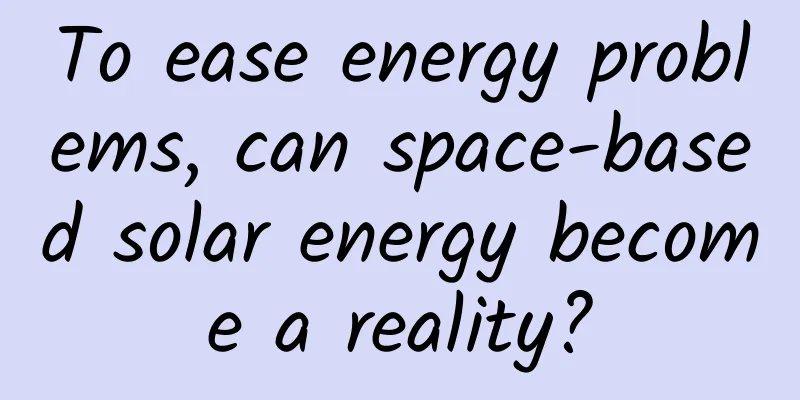To ease energy problems, can space-based solar energy become a reality?

|
According to Science and Technology Daily, the European Space Agency recently released an artist's concept map of "space-based solar energy." In the map, the energy generated by a giant solar power station floating in space is emitted toward the earth. Decades ago, American aerospace engineer Peter Glaser proposed a plan to put photovoltaic power stations into the orbit of solar satellites. His plan was to build a huge solar array to collect a large amount of sunlight, generate electricity through the principle of photoelectric conversion, and then transmit the generated electricity to the earth in the form of microwaves, and then convert it back into electricity after rectification and send it to the national power grid. Recently, it was reported that the first prototype of Airbus' space-based solar satellite was successfully tested. Airbus has demonstrated photovoltaic transmission technology that can transmit solar power from space. Airbus has now demonstrated how this new technology concept works in its X-Works innovation factory. The core of the space solar power station is the solar power generation equipment. At present, solar cells include semiconductor solar cells and photochemical cells under research. Semiconductor solar cells can be subdivided into four types: silicon solar cells, multi-compound thin-film solar cells, polymer multilayer modified electrode solar cells and nanocrystalline solar cells. Currently, many countries are studying space solar power generation technology. The team of the Qian Xuesen Space Technology Laboratory of the Fifth Academy of China has carried out specific research on solar power stations and is in the research and experimental stage. In March 2012, the Chinese Academy of Sciences proposed a "four-step" strategy in the "Report on the Forecast and Countermeasures of the Development of Space Solar Power Station Technology", believing that my country may develop the first commercial space solar power station system and realize the commercial operation of space solar power stations between 2030 and 2050. However, some scientists believe that space-based solar energy currently faces problems such as high power generation costs, possible environmental pollution, and inability to guarantee safety. With the development of aerospace technology, if these problems and difficulties can be properly handled, it may be possible to build solar power stations in space in the future. (Xu Mingyang) |
>>: What happens if you meet a male doctor during a gynecological examination?
Recommend
A complete analysis of social media promotion methods for Apps
In the era of mobile Internet, traffic is king. I...
What AI can and cannot do for cybersecurity
If we were to ask what has scared netizens the mo...
Overseas Promotion: How to promote and attract fans on YouTube?
Because of my work, I currently have the opportun...
5 formulas to analyze the growth secrets of soul APP
As a stranger social product, Soul has establishe...
Drinking 3L of Coke every day for ten consecutive years, what happened to this outrageous person?
This man drinking diet cola is my leader’s leader...
Is business card sending safe in iOS 17?
Recently, many US law enforcement agencies and ne...
There is a kind of Wuhan called East Lake!
Because the river flows through the city Wuhan is...
Is the LG G3's camera IMX 214?
Which sensor does the LG G3 camera use? Is it IMX ...
Huang Zhang's first battle after returning to Meizu: chasing Lei Jun relentlessly
Xiaomi, which was only founded in 2010, has now g...
Neither a handheld nor a home console? The truth about Nintendo NX from clues
In the next-generation war, although Nintendo sti...
Sharing experience in designing high-conversion e-commerce detail pages!
This article will talk about conversion. Let’s ta...
These 3 characteristics in an intimate relationship are reminding you: Run away!
Not long ago, a 21-year-old game power leveler na...
Toyota Supra spy photos: details similar to FT-1 concept car
Recently, overseas media exposed the latest spy p...
Shocked! The prototype of "Patrick Star" is so indescribable!
When it comes to stars, you may first think of Pa...
2020 Advertising Industry Survival Guide
In recent years, remarks such as "4A is dead...









